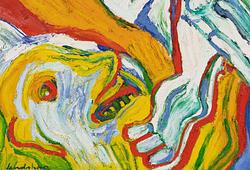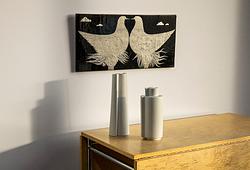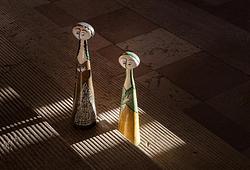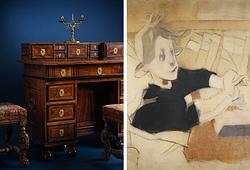Carl Milles
"The skater princess".
Signed Carl Milles. Numbered, no. 3. Dated 1952. Foundry mark Herman Bergman Fud. Bronze, green patina, height 31 cm.
Kirjallisuus
Henrik Cornell, "Carl Milles, hans verk", 1963, the motif listed in the catalogue raisonné p. 258 under the year 1949.
Erik Näslund, "Carl Milles - en biografi", 1991, the motif listed in the catalogue raisonné p. 337 under the year 1949.
Muut tiedot
Carl Milles' 1949 sculpture “Skridskoprinsessan" (The Skating Princess) is a joyful celebration of movement, inspired by a young girl Milles saw skating in New York's Rockefeller Plaza. Delighted by her energetic movements, he decided to capture the moment in bronze. The result is a lively and playful sculpture in which the young girl's outstretched arms and swirling skirt give the impression that she is floating in a pirouette.
The sculpture stands in stark contrast to Milles' other works from the same period, such as “Människan och Pegasus” (Man and Pegasus) 1949 and “Guds hand” (The Hand of God) 1949-1953, which are characterized by existential themes of security and man's relationship with the divine. In “Skridskoprinsessan" however, we encounter a lighter, more playful dimension of life, where Milles captures the freshness and vitality of endless movement. Although the figure is cast in bronze, the movement feels so alive that we can almost see the girl continuing to spin.
Milles was known for his ability to capture movement in his sculptures, a theme that recurs in his works from the 1940s and 1950s. An example of this is “Skridskoåkande änglar” (Skating Angels) from 1948, which can be seen as a parallel to “Skridskoprinsessan". Here, however, the celestial figures of his earlier works are replaced by a more down-to-earth representation, with the playful princess symbolizing the freedom of youth. The sculpture creates a magical moment where the physical meets the dreamlike, and Milles highlights a movement that is both alive and symbolic.




























































